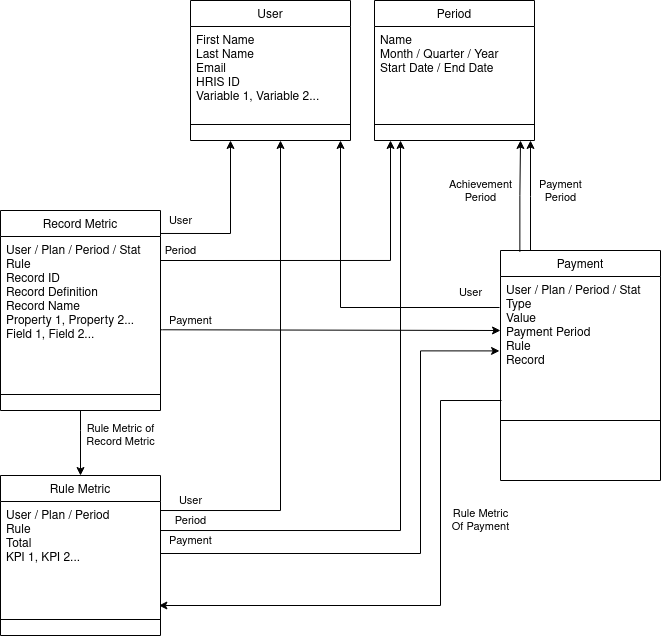Create a custom report
What is a Custom Report?
On Amalia, you can create reports by flexibly combining data from statement calculations, directory and other sources.
With any report on Amalia, you can:
- view and manipulate it directly (join, search, filter, sort, reorder)
- share it with others
- export it as a .csv file
- access it through API
Create your first report
Welcome to the Amalia Report Creation Guide! This guide will take you on an exciting journey to create, personalize, and make the most of reports in Amalia. Reports let you visualize, share, and even spice up data from the calculation engine – think payments, statements, and more! Plus, you can tap into your directory and upcoming data sources for a complete reporting adventure.
For detailed instructions, please refer to the video:
Data models and joins
You have the possibility to create a report on those different objects, and link them using the "Configure Joins" modal by following the arrows in this data model.

